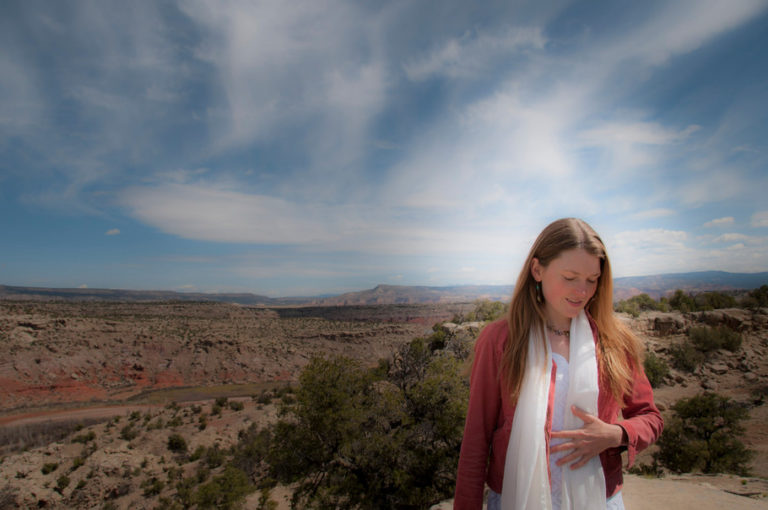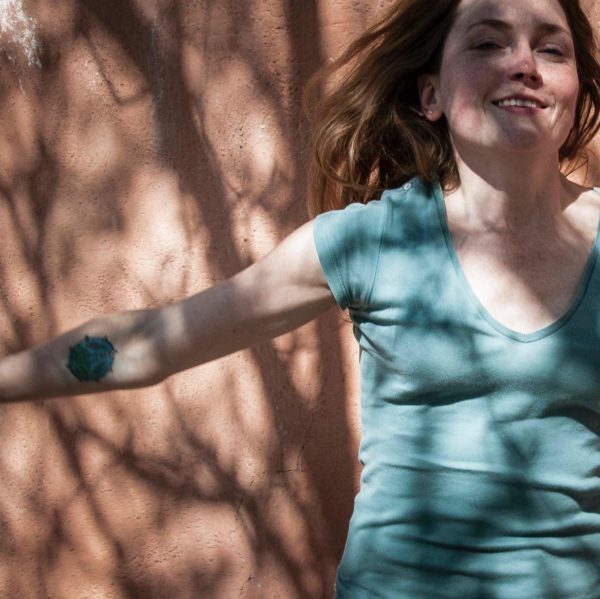
Image by Andrew Hunt.
Where the Earth is Most Torn: On Staying with Discomfort
How shall one know a generation, a new generation?
Not by the dew on them! Where the earth is most torn
And the wounds untended and the voices confused
There is the head of the moving column…
—George Oppen, “Of Being Numerous”
When I was a child growing up in Minneapolis in the mid ‘80s I used to frequent an abandoned parking lot one block south of my home. The cracked pavement was bordered by a smashed guardrail on one side, like a car had run head long into it, and thick lengths of cable on the other three sides.
Inside this small urban perimeter, shards of broken glass and random articles of garbage lay derelict amidst stinging nettles and other weeds that poked through the concrete from the rich earth below. I’d run to the parking lot when I had fights with my older brother or when I was mad at my parents for being unjust in their boundary-setting parental way. I seemed to go there when I experienced some discomfort in my life — to think, feel, and cry.
I had a favorite place to sit, upon an old metal paint barrel next to a small maple tree that had shot up awkwardly through a heap of smashed concrete. From there, I could view the cityscape and the University of Minnesota campus in the distance. I looked out and imagined whom I would become, the places I would travel. Over seven or eight years, I watched as the small maple sapling grew into a sturdy young tree with presence and determination, visibly more substantial in size each year.

And then all at once, the summer arrived that I could sit completely canopied by tree’s speckled shade. By then my makeshift barrel seat had disappeared. Operation Desert Shield began in the Middle East. The photos of the conflict arrived at our doorstep on the front pages of the local newspaper in the still-humid mornings of late summer.
I entered seventh grade. I started hanging out on the other side of town. I had my first real argument with my dad. Around the same time, the deserted parking lot was demolished and my sweet sugar maple companion, once so sure and steady, went with it.
A year passed. My body changed into that young womanly thing. I finished eighth grade. I got my first boyfriend. Not long afterwards brand-new townhomes sprang up where my parking lot maple had been. I had wept many tears there and studied the buildings of downtown in all kinds of light. I talked out, as if to God, from that rubbled lot. I met myself there, and grew.
Today, almost 25 years later, I live in New Mexico, and the discomfort of living and being comes and goes diurnally like cycles of mini seasons that I know intimately. In the morning I dress and run down to the outdoor track near my home through gusts of wind and flickers of cool rain. I stretch on winter-brown grass and look up at the clouds, infrequent in this climate. I lie still, touched by the feeling inside of the lusciousness of the Earth, how she knows herself so well, how magnificent and compassionate and ruthless the Earth is, how numerous her mixtures and combinations of appearances. I lie on the ground noticing the lavish and uncomfortable willfulness that the exertion of running evokes in me — similar to the feeling of facing courageously into life’s challenges. I notice, as I often do, myself feeling closer to myself, more visible, more open, more compassionate, having put energy into moving my body outside in nature. More “known” somehow.

How do we come to “know” ourselves truly? The poet George Oppen states that we will know ourselves, our generation “where the earth is most torn/And the wounds untended and the voices confused.” It seems our world is an arena full of the untended, the confused. But how can we become accountable to the whole of it? How can we participate? And then persist in seeing the health of our world through all the rubble?
I think we can call the untended and confused states-of-being “discomfort.” But what is it, exactly, and how might it help us to grow? How might we be supported and held, and even “comforted” by discomfort? How might we use discomfort to quiet the worried, agitated, corrupted, limited mind that resists growth and change? From a somatic perspective — through staying with felt-experience, feeling presence from the inside-out — what experiences take us most notoriously toward the edges of our inner selves, toward growth and transformation, toward touching the fullness of ourselves as living beings of this natural earth?
Discomfort comes with sensation, and these sensations can guide us. The soma of the body has messages that dangle on the nerve fibers. A vibration happens in discomfort, and on a winter’s day in northern New Mexico it’s good to get down and be with it, lying on the earth and looking up at the low flowing clouds.

I see who I am because of discomfort. I am recently divorced. I have changed my career path significantly. My children are adjusting and thriving. And best of all, I have met the love of my life, and in this meeting I experience the discomfort of learning to keep my heart open. I press on past old habits of unhealthy loving. I take off the door of my heart. I am open to myself. I see the sun and I soak up its light into my being.
I give myself this advice as a resource: become intimate with discomfort. Pull it closer. Mend nothing first. Don’t say, “I will allow discomfort to teach me when I have finally done XYZ.” Take to discomfort now and feel the sensations in the body that correspond and feel how alive you are.
The love of my life says:
“I can measure the speed at which I will grow by my ability to meet and stay with the discomfort that comes from showing up for myself.”
More and more discomfort looks like a friend. Today, and tomorrow, and the next day, I will stand reverently at the edge of that rubbled parking lot in memory, knowing that I can rise through concrete with the intense, inherent instructions to grow, just like the sugar maple. Just like we do, generation after generation, people in a moving column, the head of which is love.


Share your reflection